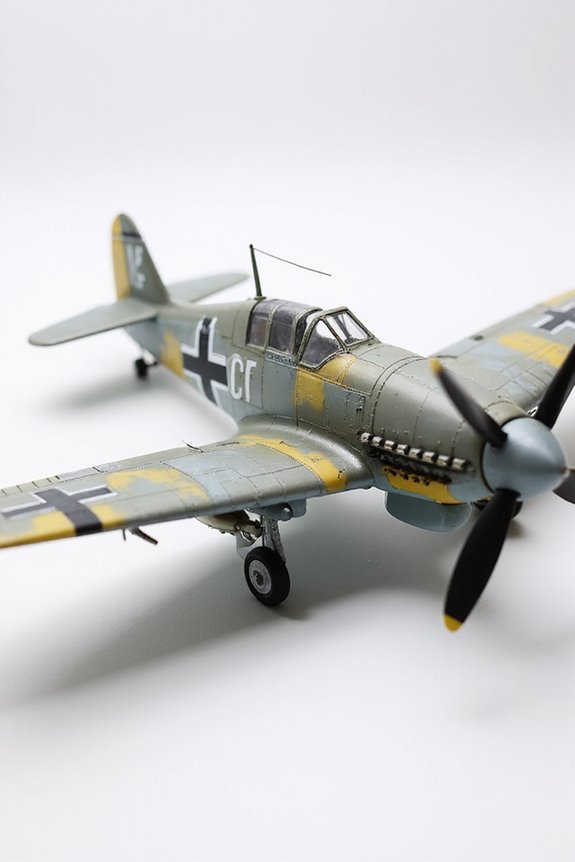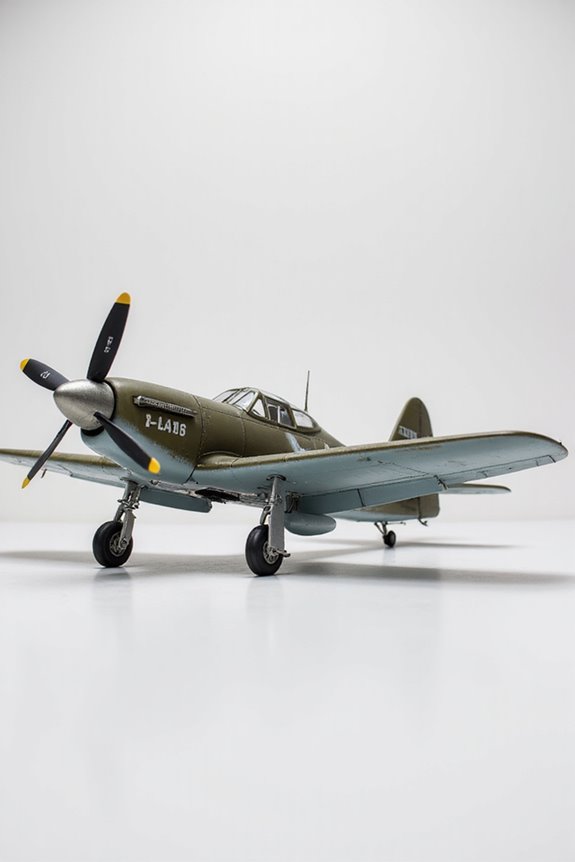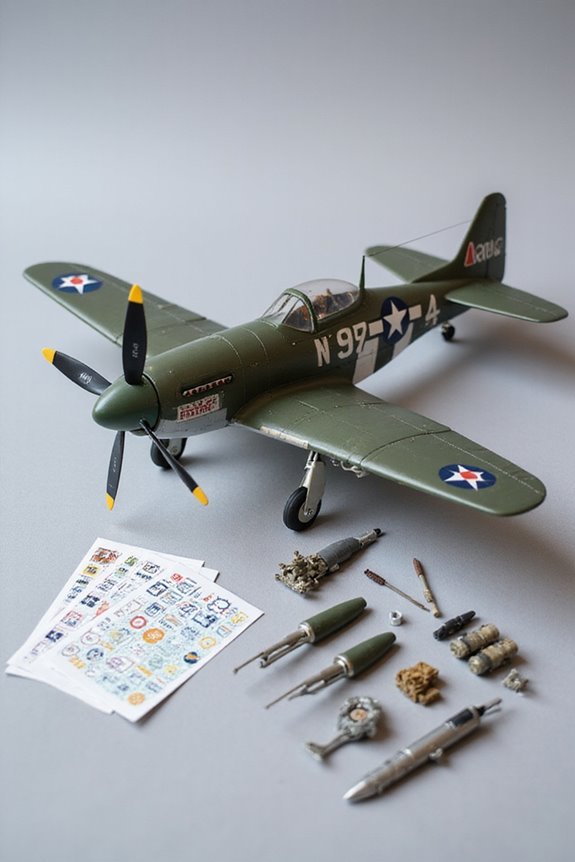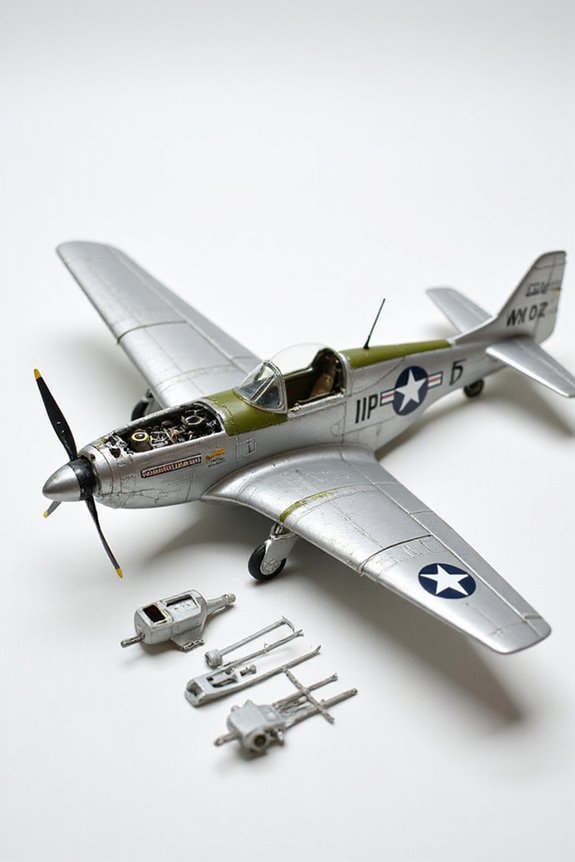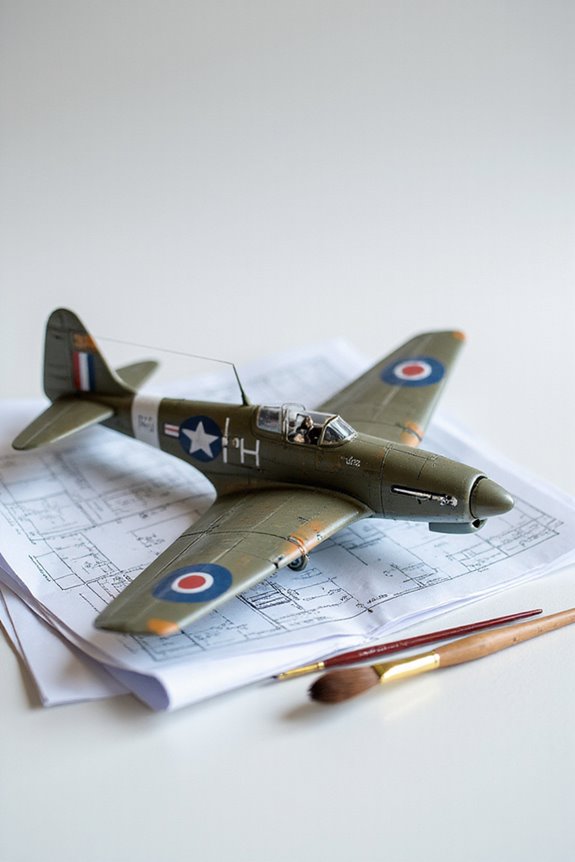If you’re diving into the world of European model aircraft, we’ve got some fantastic brands to check out! Revell and Italeri lead the way with their easy-to-build and detailed kits. For die-cast options, Herpa Wings and GeminiJets are exceptional. Don’t forget about paper models from FlyModel and Halinski—they’re like crafting magic! These brands cater to various tastes, so there’s something for everyone. Stick with us, and you’ll discover even more about these exciting options!
Key Takeaways
- Revell Germany and Italeri lead in plastic model aircraft kits, offering a variety of builds for different skill levels.
- Airfix is popular for its accessible models and extensive options, appealing to both beginners and experienced hobbyists.
- Eduard is highly regarded for its detailed kits, often featuring photo-etched parts for enhanced realism.
- Herpa Wings and GeminiJets specialize in high-quality die-cast models, catering to collectors with fine detailing.
- Innovative manufacturers like Deutsche Aircraft focus on sustainability, reflecting the industry’s shift towards environmental responsibility in design.
Leading Plastic Model Aircraft Kit Manufacturers in Europe
When it comes to plastic model aircraft kits in Europe, we’re flying high with some well-known brands. Brands like Revell Germany and Italeri lead the pack, offering everything from easy builds to detailed masterpieces. Their model kit innovations keep us all excited, especially with limited editions packed with extras.
In our brand comparisons, Heller shines with its historically accurate kits, while Special Hobby explores fascinating niche subjects. Airfix remains a favorite for accessibility and variety. Eduard sets the bar high with their exceptional detail and fit, often including photo-etched parts. Each brand caters to different tastes and budgets, so whether you’re a novice or expert, there’s a perfect kit for you. Happy building!
Top Die-Cast and Pre-Made Model Aircraft Brands
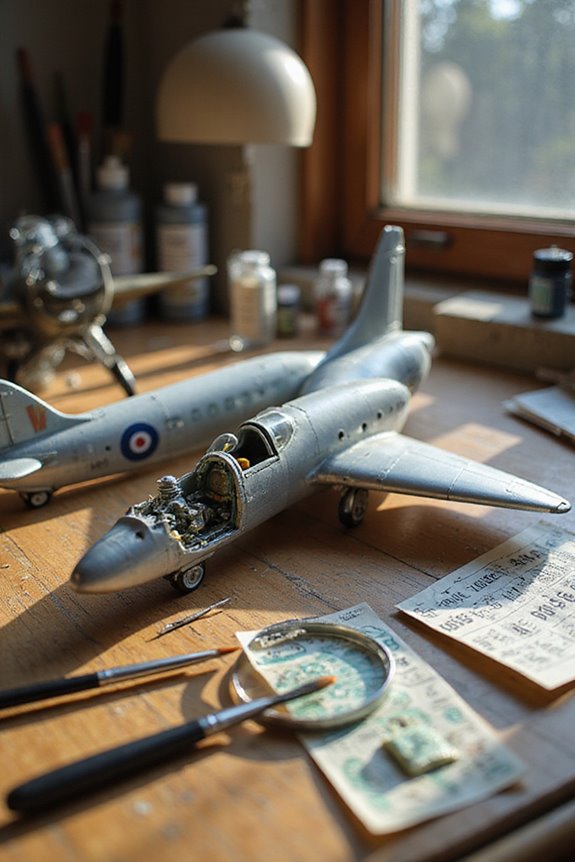
Die-cast and pre-made model aircraft are like the ready-to-fly versions of the model world—no long build times or messy glue to deal with! If you’re aiming for die-cast quality, brands like Herpa Wings and GeminiJets set the bar high. They produce stunning replicas in 1:400 and 1:200 scales, showcasing model authenticity with attention to realistic liveries.
Gearbox and NG Models bring modern airliners to life with fine detailing and innovative features—think retractable landing gear and realistic engine designs. For collectors, our favorites include Premier Plane for military and Oxford Diecast for classic aircraft. These models aren’t just display pieces; they’re an easy way to enjoy the beauty of aviation without the hassle. So, who’s ready to add some wings to their collection?
Notable Manufacturers of Paper and Card Models
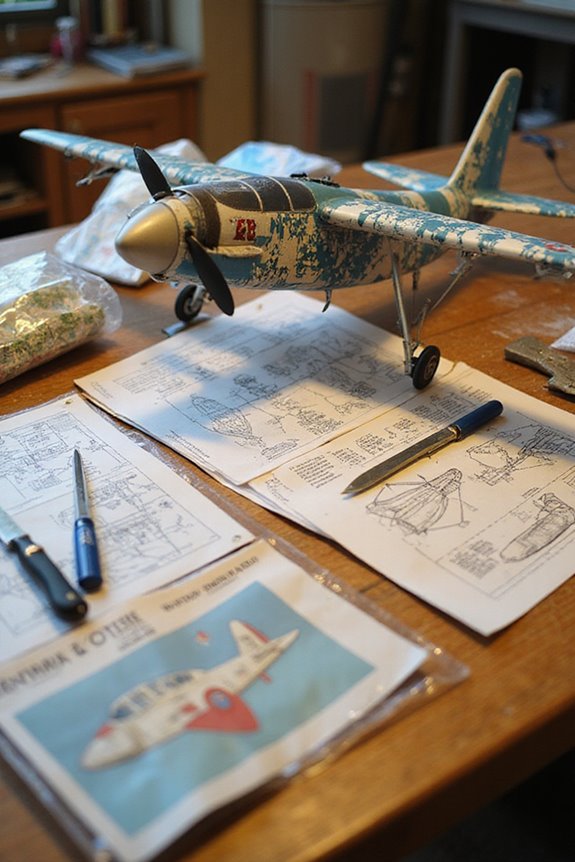
Model aircraft don’t just come in die-cast and pre-made varieties; there’s a whole world of paper and card models waiting for us to explore! Brands like FlyModel and GPM from Poland offer stunning kits that master papercraft techniques and achieve remarkable historical accuracy. Halinski takes the cake for intricate WWII designs that not only look amazing but also showcase engineering precision.
Over in Bulgaria, ModelArt provides authentic Eastern European aircraft kits, letting us build pieces of history. Schreiber-Bogen from Germany excels in traditional designs, blending sturdiness with aesthetic appeal. And let’s not forget UK brands like Hensons Hobbies, which balance history with an easy build. So, ready to release our inner model-maker? Let’s plunge into it!
Key Characteristics of European Model Aircraft Brands
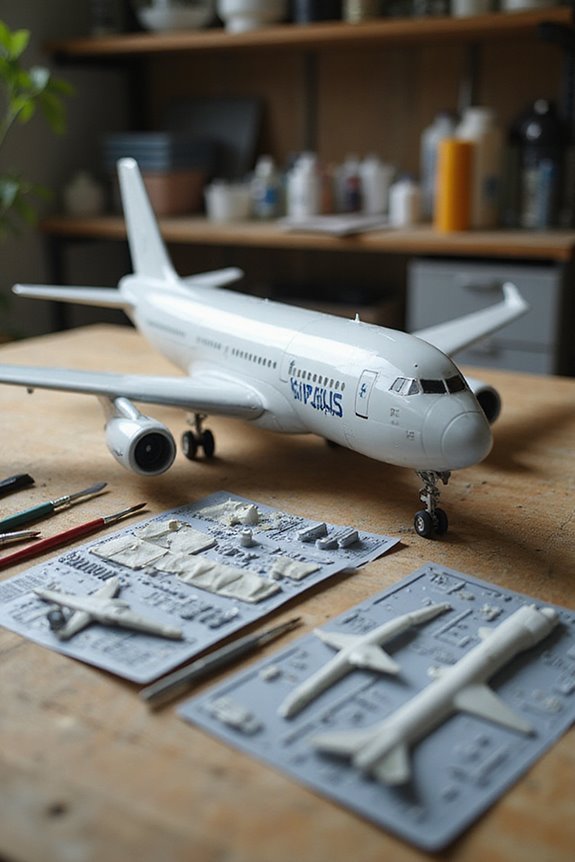
European model aircraft brands really know how to combine style and performance, making our flying experience unforgettable. They prioritize aerodynamic efficiency, giving us those sleek shapes that slice through the air like butter. With advanced design techniques, many models can hit jaw-dropping speeds over 200 km/h, all while being incredibly maneuverable.
The use of composite materials, like carbon fiber, keeps these aircraft lightweight yet strong. And let’s not forget the craftsmanship—each model often reflects a balance of precision engineering and hand-finishing. You can fly them for up to 2000 km, which is impressive for light aircraft! So whether you’re a newbie or a pro, these brands truly offer something special for all of us soaring enthusiasts.
Market Trends in the European Model Aircraft Industry
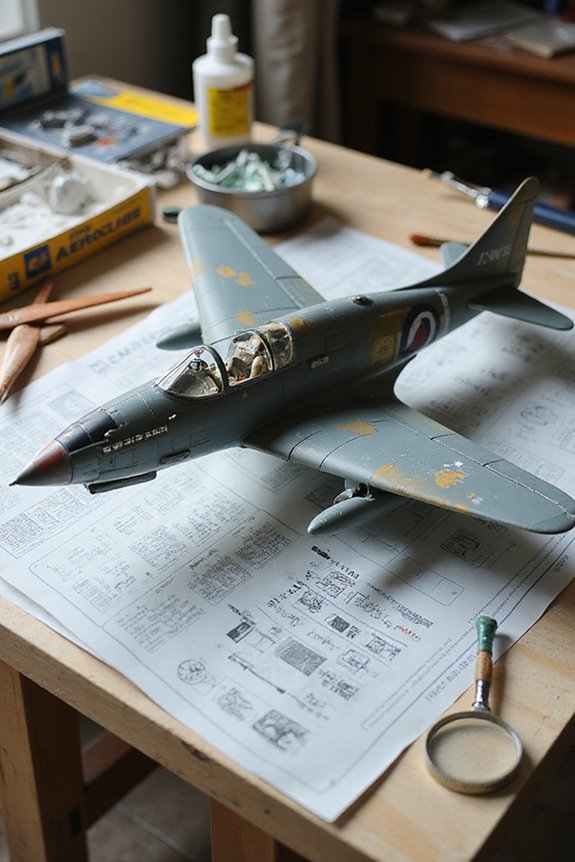
As we plunge into the market trends of model aircraft, it’s clear there’s a lot happening in this high-flying industry. The European model aircraft market is set to hit USD 336.06 million in 2024, boasting a steady growth rate of 3.8% through 2033.
Consumer trends show a clear pull toward innovative materials and precision engineering. People want models that not only fly but look fantastic on display too!
With the rise of digital integration and a push for sustainability, manufacturers must keep up with market dynamics or risk getting left behind.
There’s ample room for niche brands to sprout, satisfying the curious tastes of hobbyists keen for unique products. Buckle up; this market’s just getting started!
Popular Scales for Model Aircraft
Choosing the right scale for model aircraft can feel like a kid in a candy store—so many options! We often see collectors gravitating toward the popular 1:48 and 1:72 scales. These mediums strike a balance between size and detail, perfect for showcasing WWII fighters and classic aircraft. The 1:72 scale, often dubbed the largest practical size, allows us to recreate large models without space hogging.
Meanwhile, smaller scales like 1:100 or 1:144 are favorites for airliner enthusiasts. They fit neatly into our display areas but offer limited detail. Larger scales like 1:16 wow with their intricate pieces but require more shelf space. Ultimately, our scale choices reflect both collector preferences and the scale advantages in detail and display possibilities.
Specialization in WWII and Classic Aircraft
When it comes to model aircraft, we can’t ignore the incredible focus many brands put on WWII and classic aircraft. Brands like Italeri and Airfix are famous for their detailed kits of iconic WWII aircraft like the Spitfire and Hawker Hurricane. These classic fighters are not just models but miniature histories waiting to be built. Brands such as Eduard excel in precision, offering kits that include everything from the Messerschmitt Bf 109 to the Focke-Wulf Fw 190. Revell’s take on classic aircraft combines approachable designs with impressive detail, making them ideal for both beginners and seasoned modelers. Additionally, many of these kits include customization and decal options, allowing builders to personalize their models for a unique touch. With so many options, building these WWII aircraft can be as enthralling as flying them in the sky.
Importance of Aftermarket Extras
Understanding the importance of aftermarket extras can truly elevate our model aircraft projects from basic to breathtaking. Aftermarket decals, for instance, add authenticity and detail, showcasing specific air forces and historical accuracy. Who wouldn’t want to see their model proudly decked out in squadron colors?
Then we have photo-etched parts, which provide intricate details—think of them as the sprinkles on our model cake. They enhance things like cockpit panels or add seat belts, boosting the realism we all crave.
Combining these extras not only improves scale fidelity but also creates a unique masterpiece worthy of display. So, why settle for average when we can create a show-stopping model? It’s time to go the extra mile and enjoy the rewarding journey!
Balancing Price and Quality in Model Kits
As we explore the world of model aircraft, we can’t overlook the delicate dance between price and quality. It’s like trying to find that perfect pizza topping—everyone’s got their personal preference!
When it comes to price optimization, brands like GeminiJets and Aeroclassics nail it with their mid-range offerings. They provide impressive quality without breaking the bank. However, when we look at simpler kits, like Airfix, we find decent quality at accessible prices, ideal for newcomers.
Quality assessment plays a big role too. Kits with superior detailing (like those from Tamiya) may cost more but offer an unparalleled build experience. Ultimately, choosing the right kit depends on balancing that budget with our desire for detail—just like finding the best toppings for our model-building pizza!
Emerging Manufacturers and Market Niches
With the aviation landscape constantly changing, we’re seeing exciting new players pop up in the European model aircraft market. Emerging manufacturers like Deutsche Aircraft are shaking things up, focusing on carbon-neutral tech and innovative designs. They’re not just crafting models; they’re setting trends in operational flexibility and environmental responsibility.
These newcomers fill market niches often ignored by bigger companies, especially in regional aircraft segments. As we explore options, we’ll find models highlighting rare narrowbody jets and historical designs that collectors love.
Frequently Asked Questions
What Tools Are Necessary for Assembling Plastic Model Aircraft Kits?
When assembling plastic model aircraft kits, we need various glue types for strong bonds, plus paint options like brushes or airbrushes for a smooth finish. Using proper tools enhances our building and painting experience greatly.
Can Beginners Find Suitable Model Kits From These Brands?
With a treasure trove of beginner kits available, we’ll find model accessibility quite delightful. These brands have thoughtfully crafted options that make our journey into the skies both enjoyable and easy to navigate.
How Do I Maintain and Preserve My Model Aircraft?
To maintain our model aircraft, we should use proper cleaning techniques like gentle dusting. Storing them in stable environments with effective storage solutions protects against damage, ensuring our models remain in great condition for years to come.
Are There Any Clubs or Communities for Model Aircraft Enthusiasts in Europe?
Absolutely, there’re numerous model clubs and online forums across Europe where we can connect and share our passion. Engaging with fellow enthusiasts enhances our skills and fosters a supportive community for all model aircraft lovers.
What Are the Most Common Mistakes to Avoid When Building Models?
When we’re building models, we often encounter common pitfalls that can derail our progress. By refining our building techniques, like dry-fitting parts and carefully applying paint, we can enhance the overall quality of our projects.

